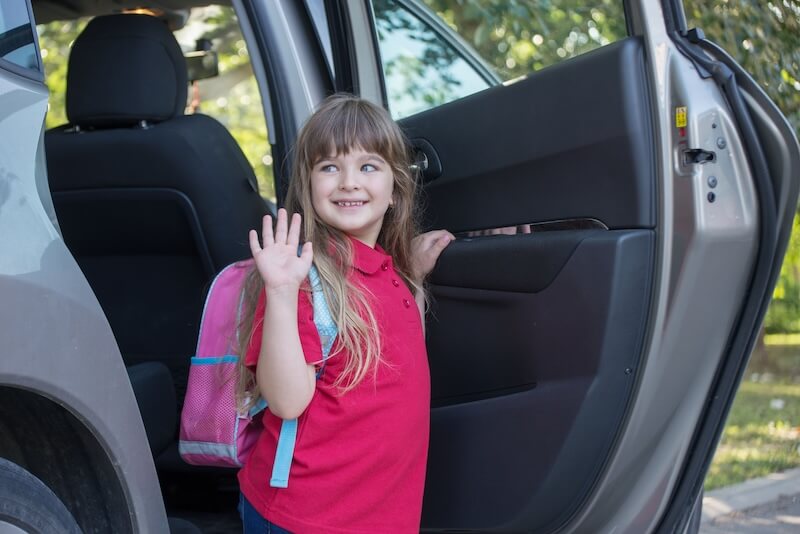The start of a new school year always brings a mix of excitement and chaos. Parents are juggling new schedules, kids are adjusting to classes, and the roads around schools suddenly feel like a whole different world. If you’ve ever driven past a school zone in the morning or afternoon, you know exactly what I’m talking about: kids darting across crosswalks, buses stopping every few blocks, and parking lots that feel more like obstacle courses than safe spaces.
As a collision repair expert here in Montana, I’ve seen firsthand how many accidents happen during this busy season. Most of them aren’t the dramatic crashes you might see on the highway. Instead, they’re fender benders in crowded parking lots, close calls in school zones, or minor dents caused by distracted driving. The good news is, with a little awareness and some practical tips, many of these collisions can be avoided. Let’s talk about how you can keep yourself, your car, and—most importantly—kids safe this back-to-school season.
The Challenge of School Zones
School zones are designed with safety in mind, but that doesn’t mean they’re easy to navigate. Reduced speed limits, flashing lights, and increased foot traffic mean you have to stay more alert than usual. A lot of drivers underestimate just how unpredictable kids can be. Children don’t always look both ways, they may run across the street to greet a friend, or they may step off a bus without checking for traffic. As a driver, you can’t assume they’ll make the safest choice, so it’s on you to anticipate the unexpected.
The simplest piece of advice is also the most effective: slow down. Driving even five miles per hour over the school zone limit might not feel like a big deal, but it can make a huge difference in reaction time. That extra second could be the difference between a safe stop and a serious accident.
Navigating School Parking Lots
If you’ve ever dropped off or picked up a student, you know school parking lots can get hectic fast. Cars are double-parked, kids are weaving between vehicles, and everyone’s in a hurry. This is prime territory for fender benders. In fact, parking lot accidents are one of the most common types of collisions we see once school is back in session.
Here’s the thing: most parking lot accidents happen at low speeds, which means they’re usually not life-threatening. But even a low-speed bump can cause thousands of dollars in damage to your car, especially with today’s advanced bumpers and sensors. That’s why patience is your best friend in a school parking lot. Leave early enough that you’re not rushing, use your turn signals even for small movements, and double-check before backing out of a space. A few extra seconds of caution can save you a big repair bill later.
The Role of Distraction
We all know distracted driving is a problem, but during back-to-school season it becomes even riskier. You might be glancing at your phone to confirm the pickup time, talking to your kids in the back seat, or fiddling with the GPS to find the right entrance. The problem is, those small distractions can easily line up with the moment a child steps into the street.
If you ever needed a reason to put your phone away and give the road your full attention, school zones are it. Remember, buses make frequent stops and kids don’t always follow predictable patterns. The fewer distractions you have, the more prepared you’ll be to react quickly and safely.
Teen Drivers Behind the Wheel
Back-to-school season doesn’t just affect parents and younger kids. It’s also a time when more teen drivers are on the road, heading to high schools and campuses. Teens are often still gaining confidence behind the wheel, and they might not yet have the defensive driving skills needed to navigate busy school zones safely.
If you have a teen driver in the family, this is the perfect time to review the basics. Talk to them about the importance of slowing down in school zones, staying alert, and avoiding distractions like texting. Even better, ride along with them during the first week or two of school so you can see how they handle the extra traffic and offer feedback in real time.
What to Do If an Accident Happens
Of course, no matter how careful you are, accidents still happen. If you find yourself in a minor collision around a school or campus, the first step is to stay calm. Make sure everyone is safe, move vehicles out of traffic if possible, and exchange information. Once the immediate situation is handled, that’s when you call us at OHS Body Shop.
We know that back-to-school season is stressful enough without having to deal with car repairs. That’s why we work hard to make the process as smooth as possible. Whether it’s repairing a dented fender or replacing a cracked bumper, our goal is to get your car back to you quickly and safely so you can focus on your family, not your vehicle.
Final Thoughts
Back-to-school season should be about new beginnings, not new repair bills. By staying alert, slowing down, and cutting out distractions, you can dramatically reduce your chances of a collision around schools and campuses. And if something does happen, remember that we’re here to help.
At OHS Body Shop, we’ve been taking care of Montana drivers for years, and we’re committed to keeping your family safe on the road. Here’s to a safe and smooth start to the school year.

